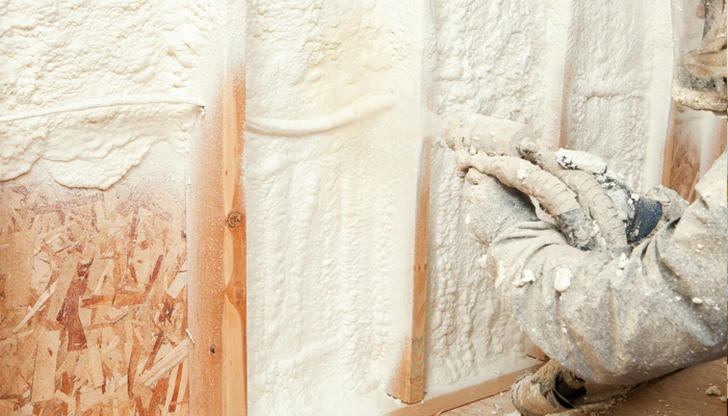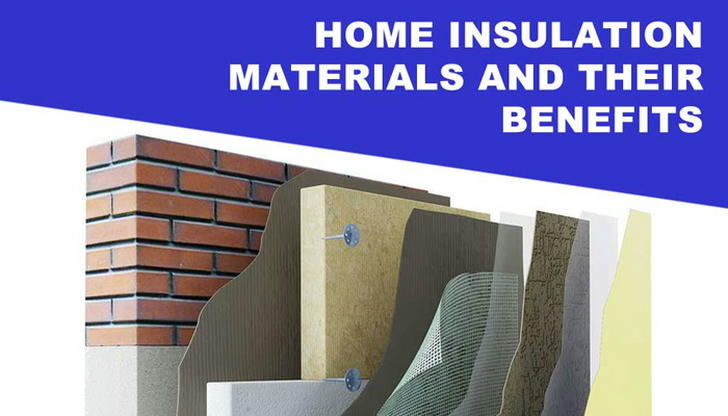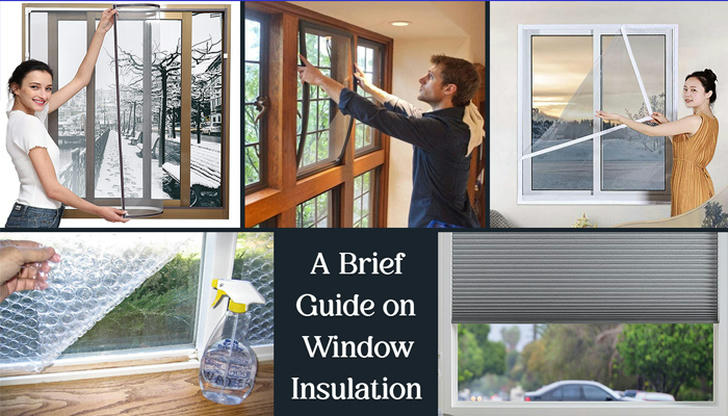Understanding Home Insulation: Types, Benefits, and How to Improve Yours

Home insulation is a crucial factor in maintaining energy efficiency, reducing utility costs, and improving indoor comfort. According to the U.S. Department of Energy (DOE), properly insulating your home can reduce heating and cooling costs by up to 20%. This guide explores different types of insulation, their benefits, and practical ways to enhance your home’s insulation.
1. What is Home Insulation?
Insulation acts as a thermal barrier, reducing the exchange of heat between the inside and outside of a home. The U.S. Environmental Protection Agency (EPA) estimates that air leaks and inadequate insulation can account for 25%–30% of a home's energy use.
Beyond energy efficiency, insulation also improves indoor air quality, controls moisture, and reduces noise pollution.
2. Types of Home Insulation
There are several insulation types, each with its own advantages and best-use scenarios.
A. Blanket Insulation (Batt and Roll)
This is one of the most common forms of insulation, typically made of fiberglass, mineral wool, or cotton.
Best for: Walls, floors, attics.
Pros: Cost-effective, DIY-friendly, widely available.
Cons: Less effective in irregular spaces or areas with many obstructions.
Data Insight: The R-value (thermal resistance) of fiberglass batts ranges from R-2.9 to R-3.8 per inch, according to the DOE.
B. Spray Foam Insulation

Spray foam expands to fill gaps, forming an airtight seal. It comes in open-cell and closed-cell varieties.
Best for: Hard-to-reach areas, sealing cracks, improving air tightness.
Pros: High R-value, excellent air sealing.
Cons: Expensive, requires professional installation.
Data Insight: Closed-cell spray foam has an R-value of R-6.5 to R-7 per inch, significantly higher than traditional insulation.
C. Blown-In (Loose-Fill) Insulation
This insulation consists of loose fibers blown into cavities, typically made from cellulose, fiberglass, or mineral wool.
Best for: Attics, walls with small gaps.
Pros: Environmentally friendly (especially cellulose), effective at filling gaps.
Cons: Can settle over time, reducing effectiveness.
Data Insight: Cellulose insulation has an average R-value of R-3.1 to R-3.8 per inch, while fiberglass loose-fill has R-2.2 to R-2.7 per inch.
D. Rigid Foam Board Insulation
These panels are commonly used in basements, foundations, and exterior walls for high thermal resistance.
Best for: Basements, exterior walls, foundations.
Pros: High insulation value, moisture resistant.
Cons: More difficult to install in irregular spaces.
Data Insight: Rigid foam insulation offers R-4 to R-6.5 per inch, making it one of the most effective materials.
E. Reflective or Radiant Barrier Insulation
Instead of absorbing heat, radiant barriers reflect heat away, making them ideal for hot climates.
Best for: Attics in warm regions.
Pros: Reduces cooling costs.
Cons: Less effective in colder climates.
Data Insight: Studies from the Florida Solar Energy Center suggest radiant barriers can reduce cooling costs by 5%–10% in warm climates.
3. Benefits of Proper Home Insulation
Upgrading insulation offers multiple advantages:

Energy Efficiency: The DOE states that homeowners can save 15% on heating and cooling costs with proper insulation.
Comfort: Insulation prevents drafts and maintains a stable indoor temperature.
Noise Reduction: High-density materials, like spray foam and mineral wool, significantly reduce sound transmission.
Moisture Control: Proper insulation prevents condensation and mold growth, improving indoor air quality.
Environmental Impact: Lower energy consumption reduces a home's carbon footprint .
4. How to Improve Your Home’s Insulation
A. Conduct an Energy Audit
An energy audit identifies areas where heat is escaping. The Residential Energy Services Network (RESNET) provides professional audits that analyze insulation efficiency .
B. Sealing Air Leaks
Air leaks are responsible for up to 40% of energy loss in homes, according to the DOE .
Fixes:
Use caulking for cracks around windows and doors.
Apply weather stripping to doors and attic hatches.
C. Upgrading Existing Insulation
Signs your insulation needs replacement:
Rising energy bills without increased usage.
Noticeable drafts in certain rooms.
Moisture issues leading to mold growth.
Tip: If your insulation is over 20 years old, consider an upgrade .
D. Insulating Windows and Doors

Even the best insulation won’t help if windows and doors allow heat to escape.
Solutions:
- Install double-glazed windows (reduces heat loss by 50% compared to single-pane glass).
- Use thermal curtains and door draft stoppers for extra protection.
E. DIY vs. Professional Installation
Small fixes, like adding weather stripping, can be done DIY. However, large projects (e.g., spray foam insulation) should be handled by a certified contractor to ensure proper installation.
Fact: A professional insulation upgrade can increase a home's resale value by up to 5% .
5. Conclusion
Proper home insulation is essential for reducing energy costs, improving comfort, and enhancing sustainability. By understanding different insulation types and making strategic upgrades, homeowners can maximize efficiency and create a more comfortable living environment.
Key Takeaway: Conducting an energy audit, sealing air leaks, and upgrading outdated insulation can lead to significant energy savings and long-term benefits.
